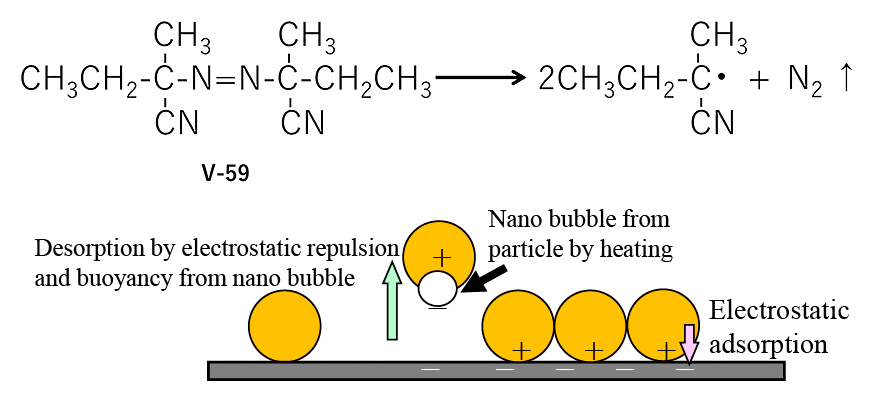- |<
- <
- 1
- >
- >|
-
2024Volume 32 Article ID: 2024.0
Published: May 25, 2025
Released on J-STAGE: May 25, 2025
Download PDF (1513K) -
2024Volume 32 Pages 1-2
Published: May 25, 2025
Released on J-STAGE: May 25, 2025
Download PDF (1734K) -
2024Volume 32 Pages 3-15
Published: May 25, 2025
Released on J-STAGE: May 25, 2025
Download PDF (15983K) -
2024Volume 32 Pages 16
Published: May 25, 2025
Released on J-STAGE: May 25, 2025
Download PDF (897K) -
2024Volume 32 Pages 17-21
Published: May 25, 2025
Released on J-STAGE: May 25, 2025
Download PDF (995K) -
2024Volume 32 Pages 22-24
Published: May 25, 2025
Released on J-STAGE: May 25, 2025
Download PDF (985K)
-
2024Volume 32 Pages 26-29
Published: May 25, 2025
Released on J-STAGE: May 25, 2025
Download PDF (2300K) -
2024Volume 32 Pages 30-33
Published: May 25, 2025
Released on J-STAGE: May 25, 2025
Download PDF (4286K) -
2024Volume 32 Pages 34-38
Published: May 25, 2025
Released on J-STAGE: May 25, 2025
Download PDF (2576K) -
2024Volume 32 Pages 39-43
Published: May 25, 2025
Released on J-STAGE: May 25, 2025
Download PDF (2872K) -
2024Volume 32 Pages 44-48
Published: May 25, 2025
Released on J-STAGE: May 25, 2025
Download PDF (3843K) -
2024Volume 32 Pages 49-53
Published: May 25, 2025
Released on J-STAGE: May 25, 2025
Download PDF (4012K) -
 2024Volume 32 Pages 54-57
2024Volume 32 Pages 54-57
Published: May 25, 2025
Released on J-STAGE: May 25, 2025
Editor's pickCD-MOF has garnered attention in the field of pharmaceuticals due to its high biodegradability and safety. Particles produced by spray-drying were found to successfully achieve high loading of levofloxacin and a significantly higher delivery rate to the lungs. Aiming for the design of inhalable combination drugs, particles prepared via spray-drying with 4-aminosalicylic acid and isoniazid demonstrated for the formulation of cocrystals, enabling the simultaneous local delivery of drugs with different properties to the lungs.
Download PDF (3048K) -
2024Volume 32 Pages 58-62
Published: May 25, 2025
Released on J-STAGE: May 25, 2025
Download PDF (2684K) -
2024Volume 32 Pages 63-66
Published: May 25, 2025
Released on J-STAGE: May 25, 2025
Download PDF (2459K) -
2024Volume 32 Pages 67-71
Published: May 25, 2025
Released on J-STAGE: May 25, 2025
Download PDF (3289K) -
2024Volume 32 Pages 72-75
Published: May 25, 2025
Released on J-STAGE: May 25, 2025
Download PDF (2985K) -
2024Volume 32 Pages 76-80
Published: May 25, 2025
Released on J-STAGE: May 25, 2025
Download PDF (3631K) -
2024Volume 32 Pages 81-85
Published: May 25, 2025
Released on J-STAGE: May 25, 2025
Download PDF (5200K) -
2024Volume 32 Pages 86-91
Published: May 25, 2025
Released on J-STAGE: May 25, 2025
Download PDF (4284K) -
 Competitive Adsorption of Particles and Surfactants at Liquid–Liquid Interfaces and Its Applications2024Volume 32 Pages 92-95
Competitive Adsorption of Particles and Surfactants at Liquid–Liquid Interfaces and Its Applications2024Volume 32 Pages 92-95
Published: May 25, 2025
Released on J-STAGE: May 25, 2025
Editor's pickTo demulsify Pickering emulsions, a common approach involves chemically altering the particles to detach from the droplet surface when exposed to external stimuli like temperature. In this research, the author introduced an innovative technique for demulsifying Pickering emulsions by utilizing the phase transition of a surfactant adsorbed film to trigger an exchange reaction between the particles and the surfactant on the droplet surface.
Download PDF (2312K) -
2024Volume 32 Pages 96-100
Published: May 25, 2025
Released on J-STAGE: May 25, 2025
Download PDF (3171K) -
 2024Volume 32 Pages 101-105
2024Volume 32 Pages 101-105
Published: May 25, 2025
Released on J-STAGE: May 25, 2025
Editor's pickZinc is attracting attention as a biodegradable implant material due to its excellent biocompatibility and biodegradability; however, its mechanical properties limit practical use. In this study, fine-grained Zn samples exhibiting several-fold higher strength and substantially enhanced ductility compared to conventional zinc were produced through spark plasma sintering (SPS) of fine Zn particles followed by heat treatment. These exceptional mechanical properties were attributed to the ultrafine grain size and dynamic recrystallization that occurs during deformation at room temperature.
Download PDF (6761K) -
2024Volume 32 Pages 106-109
Published: May 25, 2025
Released on J-STAGE: May 25, 2025
Download PDF (2861K) -
2024Volume 32 Pages 110-113
Published: May 25, 2025
Released on J-STAGE: May 25, 2025
Download PDF (3030K) -
2024Volume 32 Pages 114-119
Published: May 25, 2025
Released on J-STAGE: May 25, 2025
Download PDF (2918K)
-
 2024Volume 32 Pages 121-123
2024Volume 32 Pages 121-123
Published: May 25, 2025
Released on J-STAGE: May 25, 2025
Editor's pickThis study focuses on enhancing n-type organic semiconductors' mobility, which typically lags behind p-type semiconductors. The researchers controlled molecular arrangements using crystalline powder of organic salts and developed a novel method for creating metal-free n-type semiconductor polymers, successfully improving overall performance through both crystalline and polymeric approaches.
Download PDF (2473K) -
2024Volume 32 Pages 124-126
Published: May 25, 2025
Released on J-STAGE: May 25, 2025
Download PDF (2384K) -
2024Volume 32 Pages 127-130
Published: May 25, 2025
Released on J-STAGE: May 25, 2025
Download PDF (2630K) -
2024Volume 32 Pages 131-134
Published: May 25, 2025
Released on J-STAGE: May 25, 2025
Download PDF (2762K) -
 2024Volume 32 Pages 135-139
2024Volume 32 Pages 135-139
Published: May 25, 2025
Released on J-STAGE: May 25, 2025
Editor's pickThis study synthesized porous Ir–IrO₂/TiO₂ catalyst supports with low Ir–IrO₂ loading using flame aerosol processing. Annealing at 750°C significantly enhanced electrical conductivity, providing a simple method to optimize these materials for polymer electrolyte fuel cells where improved conductivity and stability are crucial for efficient energy conversion applications.
Download PDF (3750K)
-
2024Volume 32 Pages 141-143
Published: May 25, 2025
Released on J-STAGE: May 25, 2025
Download PDF (5547K) -
2024Volume 32 Pages 144-147
Published: May 25, 2025
Released on J-STAGE: May 25, 2025
Download PDF (10846K)
- |<
- <
- 1
- >
- >|



























